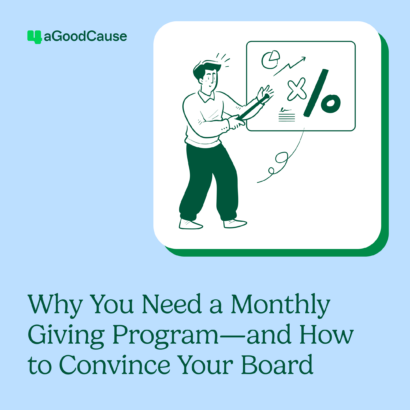Ever wonder what a merchant account is and why you would need one for your nonprofit? Quite simply, think of a merchant account as a bank account that allows you to accept donations, payments and other registration fees from donors wishing to pay with a credit or debit card. With a merchant account, a nonprofit can process credit cards in the office, at events and online through donation pages like the ones provided by 4aGoodCause.
Sounds simple, right? Many times, it is. However, there are some misconceptions and assumptions that are sometimes made about merchant accounts. Below are 10 merchant account myths. Be sure to check them out before deciding on the best merchant account option for your good cause:
Myth #1: Merchant account transactions are all processed at the same rate.
This is the most deceptive selling practice out there! If you are ever quoted only one rate, ask what the “non-qualifying” rate is. Chances are it’s a lot higher than the one rate you were quoted, and that most of your sales will be charged at the higher rate. This pricing is called “tiered pricing”, and is hardly ever advantageous for the merchant.
A better pricing program is called “Interchange Cost Plus”, where a small, constant margin is added to the costs set by Visa and MasterCard (which apply equally to all merchant service providers). Your rates will vary according to the card type, but you will only pay a fixed margin over the cost.
Myth #2: The processing rates are the only important factor.
There are many, many ways to price a merchant account. You could be offered very low rates and fees, but then have what’s called a “monthly minimum” which would ensure you would always pay at least that much every month, no matter how little you processed. There could be no setup fee, but then there might be an annual fee or a large cancellation fee. You might also be charged for changes to your account, or for online access. Be sure to check all your rates.
Myth #3: All merchant service providers are the same
Since there are so many ways to price a merchant account, the fees can vary widely among merchant service providers. Also, some cater to specific industries, or merchant types, such as non-profits. Some have a charitable component (this is rare), some focus on customer service (or not) while others offer free equipment (see myth #6).
Myth #4: If I want to accept credit cards I need to work with a merchant service provider
Square and PayPal can be alternatives for very low-volume, infrequent processing. They are what’s called “third-party processors” and offer the convenience of no monthly fees. Tradeoffs are lack of customer service, minimal functionality, higher per-transaction rates and longer funding cycles. Once a merchant starts processing more, would like to offer services like automated recurring billing (great for monthly giving) and/or prefers attentive customer service, they are usually better off with a merchant account.
Myth #5: All merchant service providers are crooks
Fortunately, this is not the case. Independent review sites such as the Better Business Bureau, Merchant Maverick and B Corporation offer ratings and insights into different merchant service providers. It’s a good idea to look up any company you are considering on those sites before signing anything.
Myth #6: You don’t need to read the fine print
Read your contract thoroughly! Ask about monthly minimums, early termination fees, monthly minimums, annual fees, etc. If you will be charged for it, it will be on your contract. A good merchant service provider will disclose all rates and fees up front, and will also show you where they are on your contract. A bad merchant service provider will not disclose all fees during the sales process, and will try to hide them in the fine print.
Myth #7: Accepting credit cards is cost-prohibitive
By performing a full cost-benefit analysis, this is most often not the case. The reason is that consumers and donors prefer to use their credit cards, and by offering that convenience, there is an increase in sales or donations. This is especially true when offering recurring donations, since someone who was willing to donate $100 might be willing to donate $10 or $15/month instead, making the total donation $120 or $180.
Myth #8: Switching merchant service providers is difficult
Switching is usually a very easy process with a good merchant service provider. They will work through all of the details, assist you with any updates, test the changes with you, and confirm you are funded properly for your first sales through their account. For an in-person account, it is usually a matter of reprogramming the equipment you already have. For an e-commerce account, it is usually a matter of updating the payment gateway information in your shopping cart or donation page. In either case, normally nothing about your sales or donation process needs to change.
Myth #9: You’re always better off with your local bank
While working with a local bank can be a great way to keep your money in your community (depending on where you bank invests it), it doesn’t always mean getting the best rate. Be sure to shop around before signing up for bundled services. Also, if your bank offers next-day funding, odds are you are paying for it somehow!
Myth #10: You’re always better off with the largest merchant service provider
Bigger is not always better. When it comes to low rates and fees, smaller firms with less overhead can offer better pricing. Customer service can be a real focal point as well, whereas with larger firms you’re contacting a large call center, where you’re just a case number, and have to talk to a different person every time. Ask what the customer service policies are and determine if you’re going to be a valued customer, or just another number.



